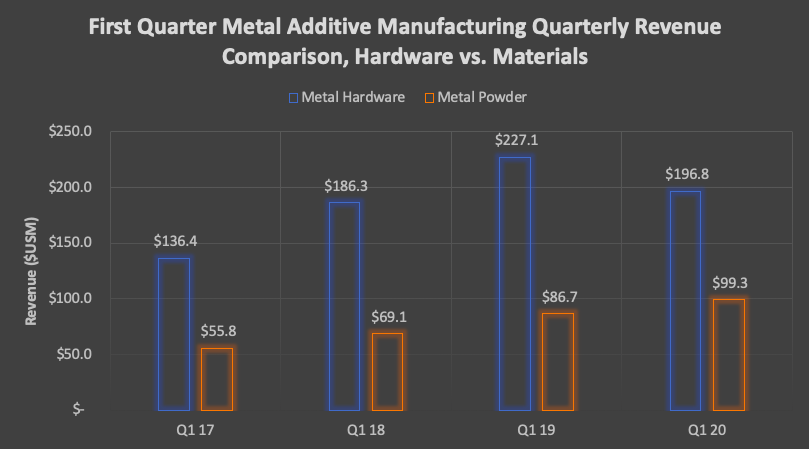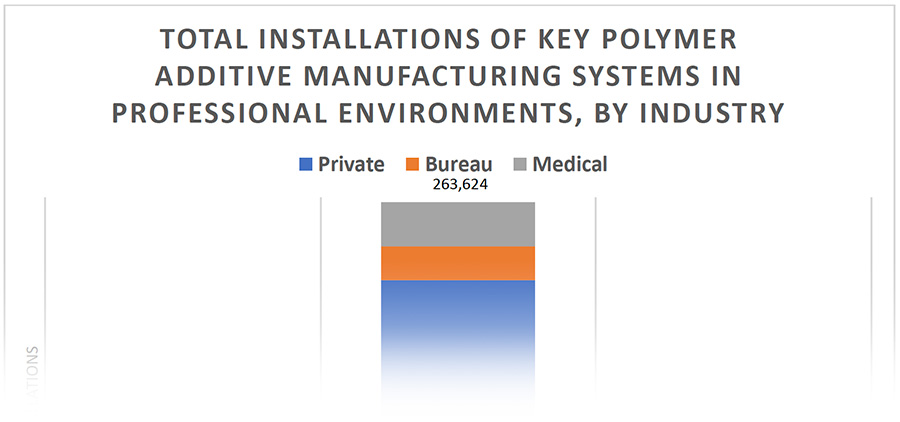Most AM companies which report public information noted during their Q1 releases that they expected Q2 to be much more heavily impacted by COVID-19. They weren’t wrong. Shutdowns and uncertainties didn’t actually hit Western firms until March. But it’s no secret that the metal additive manufacturing industry was already in the midst of tougher times throughout 2019 — we’ve written about it pretty extensively at SmarTech.
- Most of the ongoing metal AM slump story involved hardware. Metal powder sales have remained excellent. Total shipments of powders for the year in 2019 grew an estimated 37 percent compared to 2018, to an estimated 2,650 tons shipped to AM users. SmarTech estimates that in the first quarter of 2019 alone -just three months -there was as much powder sold and shipped to users as there was in all of 2014 combined; about 550 tons!
- Sales of powders have been driven by the relatively small community of AM power users which have reached serial production on certain components especially in aerospace, medical, and oil and gas. These successes include Stryker’s Tritanium product line, GE’s continued scale up of additive parts in its LEAP engines and gas turbines, Siemens gas turbine burners, and more. It has also been driven by several service providers.
- Successful implementations of AM continue to drive powder sales. While signs of some commoditization of mainstream additive powders have begun to emerge, SmarTech believes that the AM powder market will be temporarily thrust to the forefront over the next year.
- The metal additive material market is witnessing new dynamics never before seen in additive manufacturing. In 2020, diversity in materials for additive manufacturing has made significant strides compared to just five years ago. Though significant steps still are needed in this area, development of processing parameters for new additive metal powders can be a lengthy endeavor. For example, while there have historically been just four metals comprising the nickel and cobalt additive materials segment (a number which persisted for several years), today there are at least double that many alloys now offered by more than one large AM material supplier between these two major metals. Cobalt Alloy 188 and 509, as well as Nickel Alloy 230 and Inconel 738 are now widely available, to name a few.
In this PRO we show how the additive materials business has done well through the down turn, but may be about to hit its own little recession due to product maturity. Nonetheless, no supplier of metal additive manufacturing powder should worry too much. The long-term prospects for AM materials are encouraging.
(Feature image courtesy of Equispheres.)
The post Challenges Face Metal 3D Printing Powder Suppliers in 2020 appeared first on 3DPrint.com | The Voice of 3D Printing / Additive Manufacturing.


